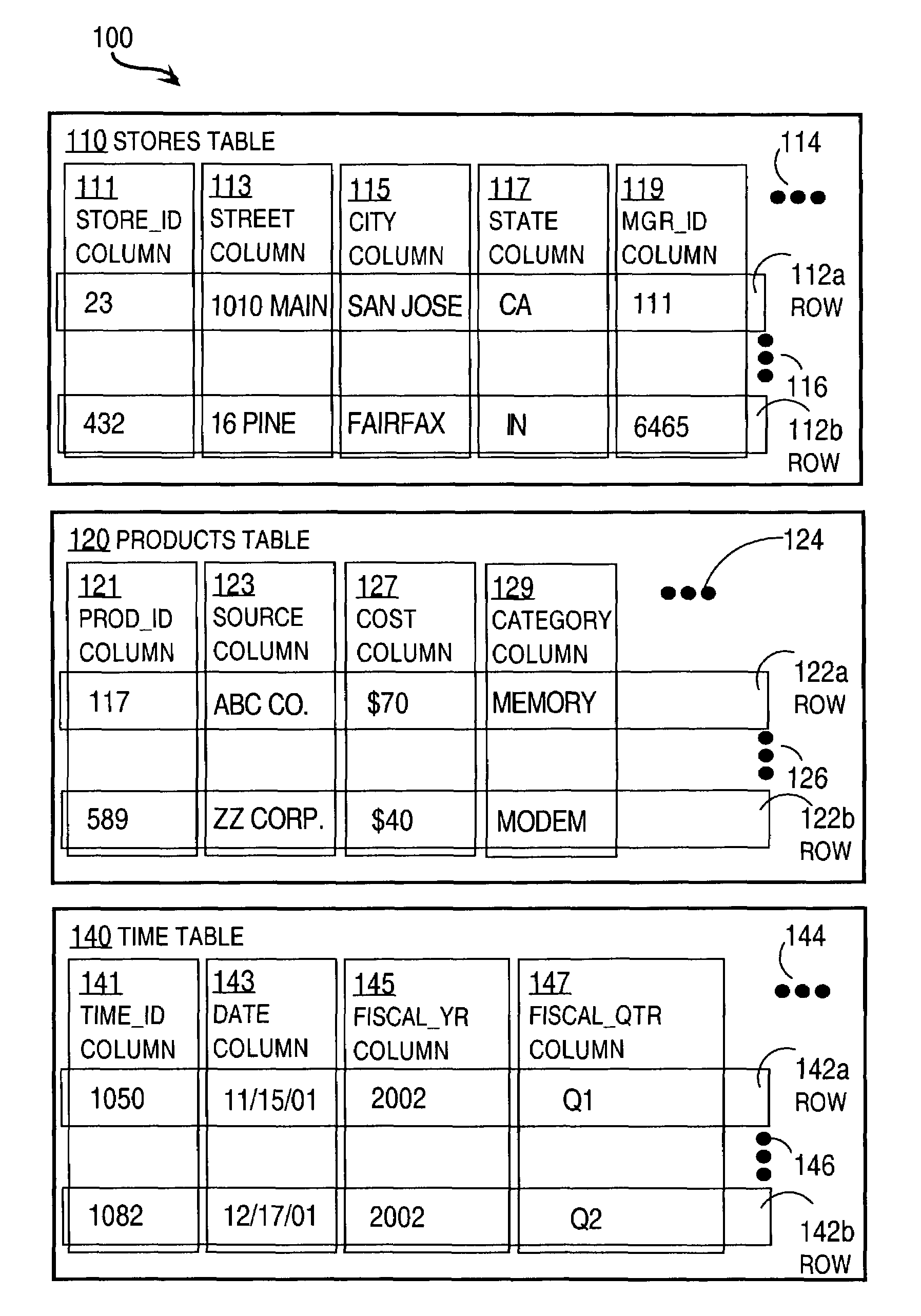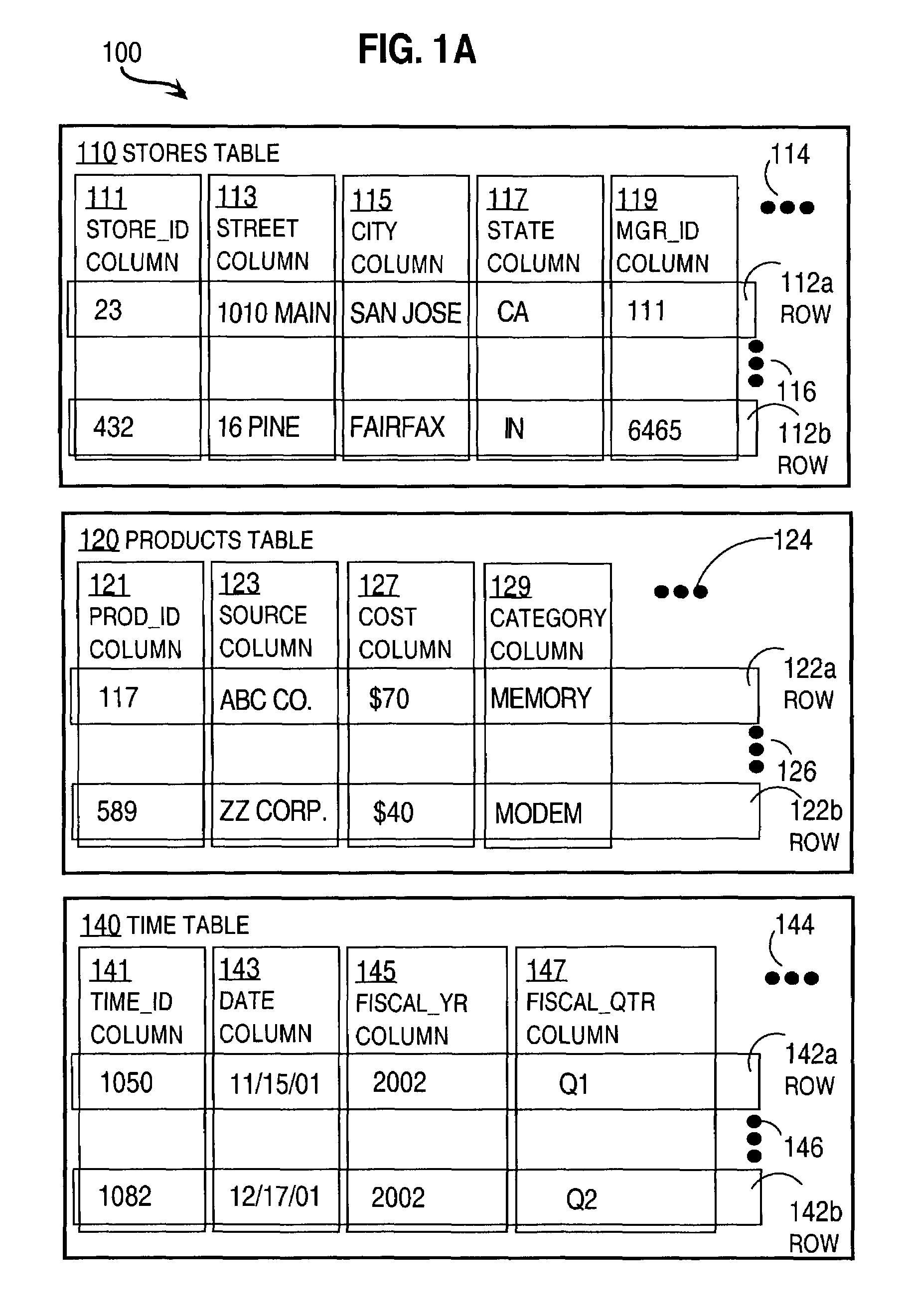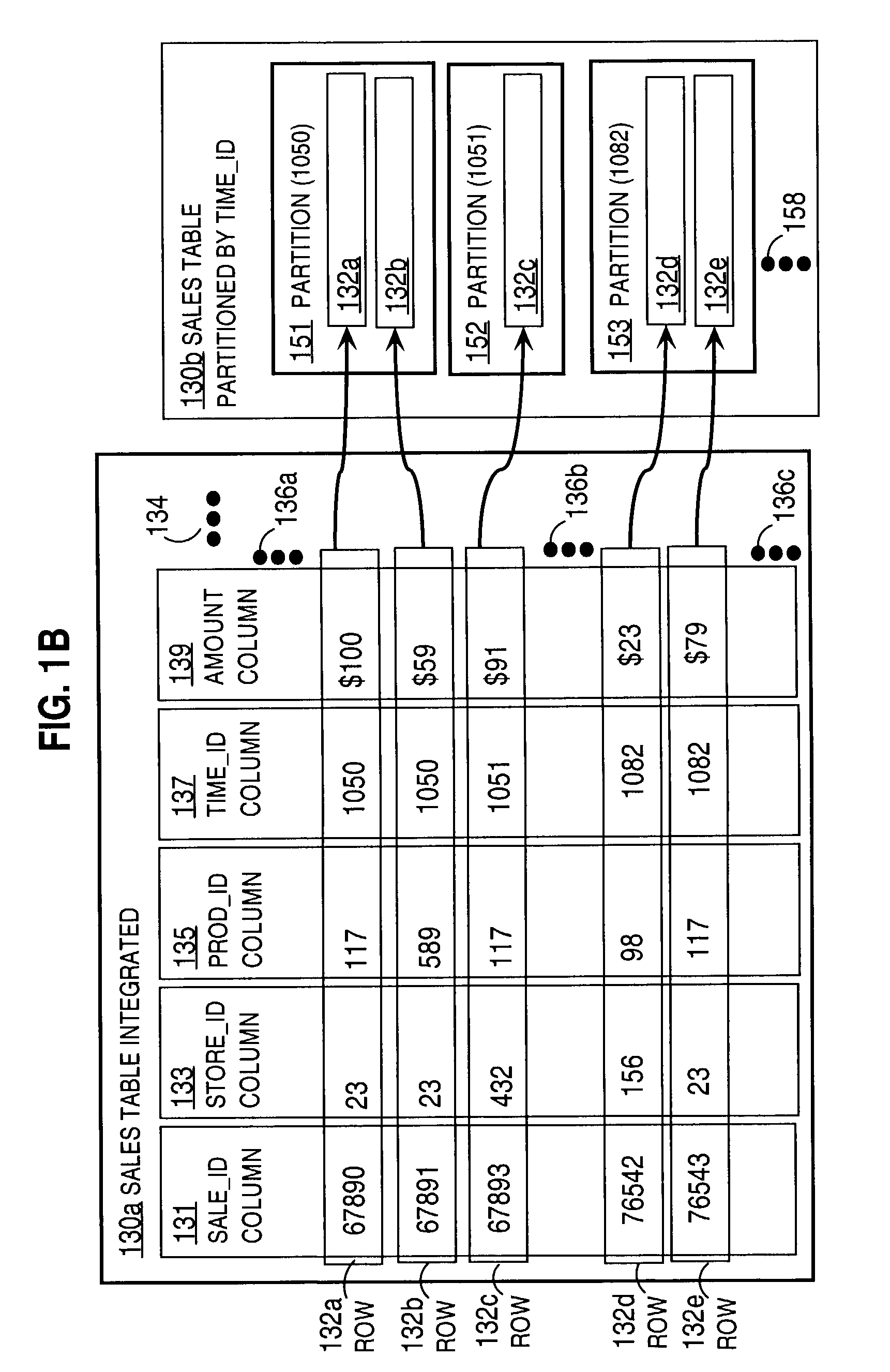Techniques for pruning a data object during operations that join multiple data objects
a technology of data objects and operations, applied in the field of data processing of data objects, can solve the problems of consuming too many computational resources, difficult to predict which subset of columns are included, and consuming considerable computational resources, so as to reduce the number of data units involved in subsequent joins and reduce computational resources. , the effect of reducing the computational resources consumed
- Summary
- Abstract
- Description
- Claims
- Application Information
AI Technical Summary
Benefits of technology
Problems solved by technology
Method used
Image
Examples
example star
SCHEMA
[0027]For purposes of illustration, it is assumed that an illustrated embodiment applies to an operation involving a fact table called SALES with three dimension tables called, respectively, TIME, STORES, PRODUCTS in a database of an electronics retailer. It is further assumed for purposes of illustration, that the SALES table is partitioned by time_id, a key column in the TIME table, as described below. It is not necessary for the fact table to be partitioned on a key column of a dimension key; the fact table may be partitioned based on any column in any of the dimension tables, based on multiple columns, or not partitioned at all.
[0028]FIG. 1A is a block diagram that illustrates example dimension tables 100 in a database, according to an embodiment. A STORES table 110 includes a primary key store_id column 111 for holding values of a unique store identifier (store ID) in each row. The STORES table 110 also includes street column 113, city column 115, state column 117, and mg...
PUM
 Login to View More
Login to View More Abstract
Description
Claims
Application Information
 Login to View More
Login to View More - R&D
- Intellectual Property
- Life Sciences
- Materials
- Tech Scout
- Unparalleled Data Quality
- Higher Quality Content
- 60% Fewer Hallucinations
Browse by: Latest US Patents, China's latest patents, Technical Efficacy Thesaurus, Application Domain, Technology Topic, Popular Technical Reports.
© 2025 PatSnap. All rights reserved.Legal|Privacy policy|Modern Slavery Act Transparency Statement|Sitemap|About US| Contact US: help@patsnap.com



